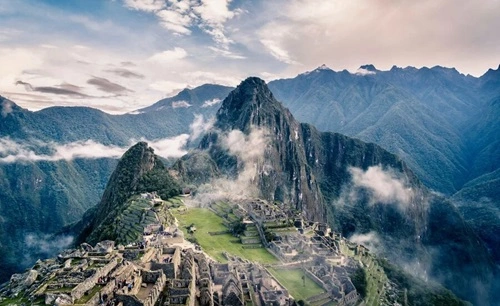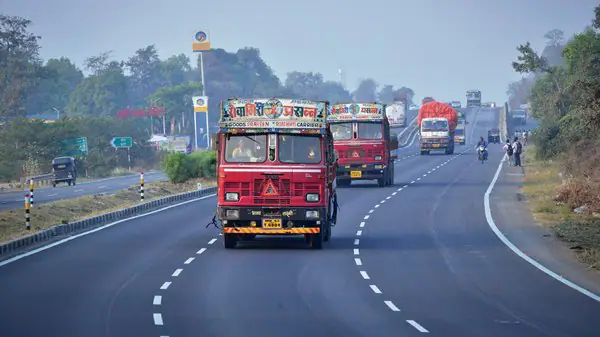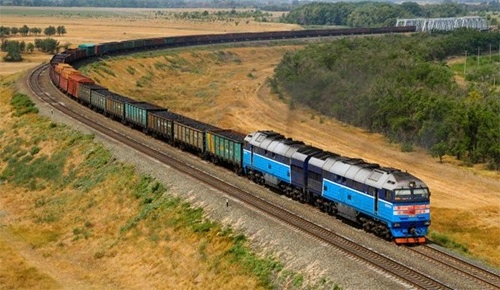Peru is a land of ancient history, breathtaking landscapes, vibrant cultures, and culinary excellence. Known for iconic sites like Machu Picchu and the Amazon Rainforest, Peru is one of South America’s most diverse and intriguing countries. From mysterious ancient civilizations to a remarkable range of wildlife, here are over 10 amazing facts about Peru that showcase the unique wonders of this captivating country.

1. Home to One of the New Seven Wonders of the World
Machu Picchu, the famous Inca citadel nestled high in the Andes Mountains, is one of the New Seven Wonders of the World. Built in the 15th century, this archaeological marvel is a UNESCO World Heritage site and one of the most visited attractions in South America. The precise purpose of Machu Picchu remains a mystery, but many believe it was a religious or ceremonial center. The breathtaking views and well-preserved ruins continue to draw visitors from around the globe.
2. The Birthplace of the Potato
Did you know that Peru is the birthplace of the potato? The humble potato was first cultivated in the Andean region over 7,000 years ago, and Peru remains one of the top producers of potatoes today. There are over 4,000 different types of potatoes grown in Peru, from colorful varieties to unique shapes and sizes. Potatoes are an essential part of Peruvian cuisine, and locals take pride in their potato heritage, with festivals and events celebrating this staple crop.
3. The Peruvian Amazon Houses Some of the World’s Most Diverse Wildlife
Nearly 60% of Peru is covered by the Amazon Rainforest, one of the most biodiverse places on Earth. Peru’s Amazon region is home to thousands of unique plant and animal species, including jaguars, pink river dolphins, giant otters, and colorful macaws. In the Manu National Park alone, scientists have identified more than 1,000 bird species and over 200 mammal species, making it a paradise for nature lovers, scientists, and photographers.
4. Peru Has an Incredible Range of Microclimates
Despite being located near the equator, Peru has an extraordinary diversity of climates, thanks to its varied geography. The country has 28 of the world’s 32 climate types, including coastal deserts, Andean mountains, Amazonian rainforests, and even tundra regions. This range of microclimates allows for an abundance of unique ecosystems and crops, including coffee, cacao, and quinoa, to thrive. Peru’s diverse climates make it one of the most ecologically rich nations in the world.
5. Ancient Civilization Predates the Incas
While the Inca Empire is the most well-known ancient civilization from Peru, the country is home to even older cultures. The Norte Chico civilization, which dates back over 5,000 years, is considered one of the oldest civilizations in the Americas. The Nazca culture, which flourished between 100 BCE and 800 CE, left behind the mysterious Nazca Lines, a series of massive geoglyphs in the desert that depict animals, plants, and other symbols. These ancient civilizations showcase Peru’s deep historical roots and rich cultural heritage.
6. Peru Has One of the Highest Sand Dunes in the World
Peru may be known for its mountains, but it’s also home to one of the world’s highest sand dunes, Cerro Blanco, located in the Sechura Desert near the city of Nazca. Rising over 3,860 feet, this giant dune attracts sandboarding enthusiasts from around the world who want to experience the thrill of gliding down its steep slopes. Sandboarding at Cerro Blanco is an exhilarating experience and a unique way to explore Peru’s lesser-known desert landscapes.
7. The Peruvian Andes are Home to Thousands of Lakes
Peru’s Andes Mountains are not only home to stunning peaks but also thousands of glacial lakes. Lake Titicaca, located on the border between Peru and Bolivia, is the highest navigable lake in the world at an elevation of 12,507 feet. It’s also one of the largest lakes in South America, rich in culture and history. The lake is home to the indigenous Uros people, who live on man-made floating islands constructed from totora reeds. Visitors can explore these floating islands and learn about the unique lifestyle and traditions of the Uros.
8. Peru is the World’s Leading Producer of Quinoa
Quinoa, the ancient grain hailed as a “superfood,” has been cultivated in Peru for thousands of years and remains a staple in the Andean diet. Peru is one of the largest producers of quinoa, growing varieties that range from creamy white to red and black. In recent years, quinoa’s popularity has skyrocketed worldwide for its high protein content and rich nutrient profile. Peruvian quinoa is now exported globally, making it a valuable agricultural export for the country.
9. Peru is a Surfer’s Paradise
Peru boasts a 1,500-mile-long coastline along the Pacific Ocean, making it an ideal destination for surfers. The town of Máncora in northern Peru is famous for its beautiful beaches and consistent waves, drawing surfers from around the world. Peru also has one of the longest waves in the world at the beach town of Chicama, where waves can stretch over 1.5 miles. Surfing culture is strong in Peru, and the country has produced some of the world’s top surfers.
10. The Pisco Sour is Peru’s National Drink
The Pisco Sour, made with pisco (a grape brandy), lime juice, simple syrup, egg white, and bitters, is Peru’s national cocktail and a symbol of the country’s cultural identity. Pisco has been produced in Peru since the 16th century, and the drink is now enjoyed worldwide. Every year on the first Saturday in February, Peru celebrates National Pisco Sour Day, where locals and tourists alike gather to enjoy this refreshing, tangy cocktail. Peruvians are so passionate about their drink that a long-standing rivalry exists with Chile over the origins of pisco.
11. The Mysterious Nazca Lines Cover the Desert
The Nazca Lines, massive geoglyphs etched into the desert in southern Peru, are among the world’s most intriguing archaeological mysteries. These designs, some over 1,000 feet long, include animals, plants, and geometric shapes. The purpose of the Nazca Lines is still debated, with theories ranging from astronomical markers to ceremonial pathways. The best way to view these lines is from the air, as their massive scale can only be fully appreciated from above.
12. Peru is One of the World’s Top Biodiversity Hotspots
Peru ranks among the world’s top countries for biodiversity, thanks to its wide range of habitats and climates. The country is home to thousands of plant and animal species, many of which are unique to Peru. For instance, Peru has more bird species than almost any other country in the world, with over 1,800 recorded species. It’s also home to around 10% of all known species of reptiles and amphibians, making it a top destination for nature lovers and researchers.
13. Guinea Pig is a Delicacy
In the Andes, guinea pig, or cuy, is a traditional dish that dates back to the Inca civilization. Cuy is commonly served during festivals and special occasions, especially in rural Andean regions. For tourists, trying cuy can be a surprising experience, but for locals, it’s a beloved dish and a significant part of cultural heritage. It’s often roasted or grilled and served whole, providing a unique dining experience for adventurous eaters.
14. Peru Has the Deepest Canyon in the World
While the Grand Canyon is famous worldwide, Peru’s Cotahuasi Canyon and Colca Canyon are deeper, with Cotahuasi being the deepest in the world at over 11,000 feet. Both canyons are located in the Andes and offer spectacular views, challenging hiking trails, and opportunities to spot Andean condors gliding on the thermals. These canyons are less visited than the Grand Canyon, giving travelers a more remote and intimate experience with nature.
15. The Amazon River Begins in Peru
Peru is home to the origin of the Amazon River, which starts in the Peruvian Andes and flows east across South America to the Atlantic Ocean. The Amazon River is the second-longest river in the world and is known for its astonishing biodiversity. Peru’s Amazon region is a popular destination for ecotourism, where visitors can explore the dense jungle, spot exotic wildlife, and learn about indigenous communities who live along the river.
From its mysterious ancient civilizations to its breathtaking landscapes, Peru is a country that offers something for every type of traveler. Whether you’re trekking to Machu Picchu, tasting the diverse flavors of Peruvian cuisine, or exploring the vast Amazon jungle, each experience in Peru is a testament to the country’s rich heritage and natural beauty. These amazing facts reveal just a few of the countless reasons why Peru is a top travel destination and a true wonder of South America. With its fascinating blend of history, culture, and natural wonders, Peru is a country you’ll want to explore time and time again.


